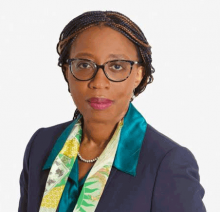You are here
Where is the Global South's rescue brigade?
Mar 28,2023 - Last updated at Mar 28,2023
WASHINGTON, DC — Over the last few months, a G-7 economy (the United Kingdom), a midsize US bank (Silicon Valley Bank), a small African economy (Ghana), a lower-middle-income South Asian economy (Pakistan), and the fastest-growing global services sector (technology) have all faced short-term cash constraints. Monetary-policy tightening in the United States, where the Federal Reserve (Fed) raised interest rates by 475 basis points in the space of a year, has produced knock-on effects around the world. But the stark disparities in how these effects are being treated speak volumes about current global financial arrangements.
The decade of low interest rates prior to 2022 led many countries and businesses to amass debt in the interest of boosting economic growth and creating jobs. But no bonanza lasts forever, and this one came to a halt when inflation began rising in the US. Now, interest-rate hikes in the US and Europe are causing severe credit distress in developing countries.
Many currencies have depreciated against the dollar by over 30 per cent, as investors have withdrawn from emerging and frontier markets in a flight to safety. Emerging-market economies’ debt-servicing costs have increased by more than $1 trillion in less than a year. Reserves as a share of imports have dropped, and inflation in Africa has risen to over 14 per cent in the low-income countries in 2022.
Worse, the rate hikes are compounding a pre-existing “polycrisis” that also includes COVID-19, climate change, violent conflict, and higher costs of living (owing to the war in Ukraine and other factors).
In developed and developing economies alike, the technology sector had remained an oasis of robust growth, helping to provide resilience during the pandemic. Startups have multiplied, and most have been funded by affordable resources. But now, SVB’s collapse is hitting this sector globally, and Africa is not exempt.
But while US regulators rush to protect domestic depositors, startups and many others have not received such assistance. For the past three years, emerging-market economies have been calling for swift action to address debt distress and contain the pandemic’s economic fallout. But these pleas have received little attention.
Once again, Africa and the rest of the developing world are left to stand by and watch as the Bank of England and the Fed take swift action to contain the domestic effects of their own policies. As always, pressures imposed on emerging-market economies by exogenous decisions are seen not as liquidity events but as insolvency issues born of those countries’ poor macroeconomic fundamentals. And, as always, the prescribed treatment will involve a protracted visit from the doctor, the International Monetary Fund (IMF), rather than a quick liquidity injection. We already know from history that this unequal treatment will have huge consequences for development and financial stability across the Global South.
This latest episode offers several lessons for African countries and emerging and developing economies more generally. First, since a liquidity crisis can come on suddenly, and with serious consequences for the real economy, we must provide the appropriate remedies, which requires distinguishing between liquidity problems and genuine solvency issues and creating the appropriate instruments.
Second, when treated immediately and with the right remedy, confidence can be restored quickly, allowing growth to recover. To provide today’s global economy with sufficient liquidity to prevent another escalating crisis, the G-7 and other major IMF shareholders should consider a new issuance of special drawing rights (SDRs, the Fund’s reserve asset) to serve this liquidity purpose.
Third, like everyone else, emerging-market economies need support to build the financial infrastructure required to address rapidly escalating liquidity problems in the future. Among other things, this means deepening capital markets and strengthening financial-sector regulation. As the Basel Committee meets to consider revisions to the prevailing macroprudential bank regulations, it should pay more attention to the contagion effects of developed-market crises on emerging and frontier economies.
Fourth, as the Fed and the European Central Bank (ECB) contemplate the pace and magnitude of future interest-rate hikes, they must recognise how their policies affect frontier economies both directly and indirectly. There is a clear need for coordination beyond just the G-20 countries and their central banks.
Finally, as the international financial system becomes more deeply integrated, we must develop truly inclusive tools to protect all economies. Innovations to preserve financial stability will need to be extended to Africa and other emerging markets. The ECB’s programme of buying bonds from Italy, Spain, Portugal, and Greece to keep capital costs in check represents one such innovation. And now, the Fed has stepped in to help make all SVB depositors whole. It is possible to slow some parts of the global economy through policy tightening while still protecting growth in other parts. But this will require a clearly articulated shared objective.
In each case, eliminating the vast disparities in how we respond to systemic crises will require new and deeper forms of coordination between the IMF, central banks, finance ministries, and the international donor community. There is no better time than now to start exploring our options.
Vera Songwe, chair of the Liquidity and Sustainability Facility, is a non-resident senior fellow at the Brookings Institution. Copyright: Project Syndicate, 2023.













